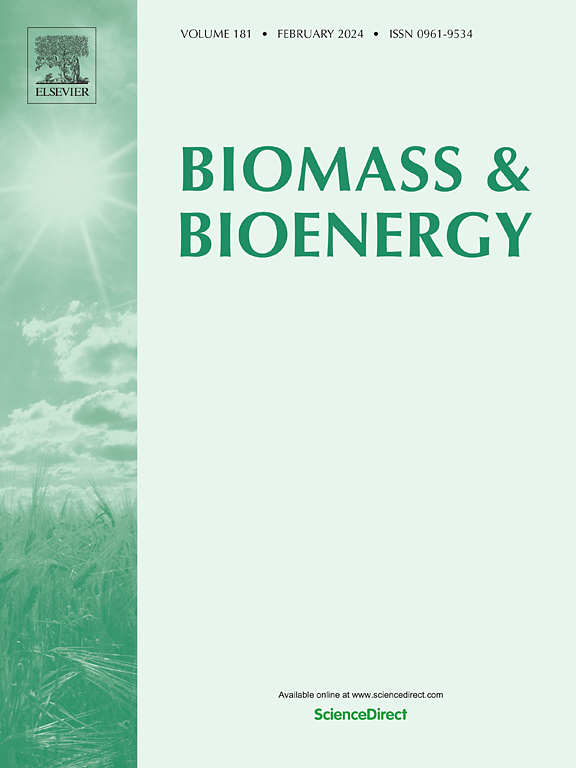Hydrothermal carbonization of swine manure in a continuous flow reactor pilot plant with process water recycling
IF 5.8
2区 生物学
Q1 AGRICULTURAL ENGINEERING
引用次数: 0
Abstract
This paper deals with hydrothermal carbonization (HTC) of swine manure in a pilot plant setup operating in continuous mode. Two temperatures (210 °C and 250 °C) were tested and recycling of the liquid fraction was studied to improve the quality of the resulting hydrochar. The hydrochars obtained at 210 °C fulfill the criteria to be used as solid biofuels (ISO 17225–8:2023). Increasing the reaction temperature led to a dramatic reduction of hydrochar yield (from 50 to 20 %) in conventional HTC (with tap water), accompanied by a moderate improvement of higher heating value (HHV, 18.2–20.4 MJ/kg), which decreased the energy yield (from 52.2 % to 23.8 %). Process water recycling significantly improved the hydrochar yield, reaching more than 80 % and 55 % at 210 °C and 250 °C, respectively, because of the formation of secondary hydrochar. C content and HHV also increased, giving rise to substantially higher energy recovery, which surpassed 93 % after four recycling tests at 210 °C. Fouling and alkali indexes of hydrochars showed much lower values than those of the feedstock mainly attributed to the solubilization of Na and K. At 210 °C, process water recycling favored a further reduction of those indexes. N and P were largely transferred to the liquid fraction, particularly the latter. Zn and Cu were, by far, the most abundant heavy metals in hydrochars, with a Zn content being slightly above the value established in Decision (EU) 2022/1244 for their application as a soil amendment.

求助全文
约1分钟内获得全文
求助全文
来源期刊

Biomass & Bioenergy
工程技术-能源与燃料
CiteScore
11.50
自引率
3.30%
发文量
258
审稿时长
60 days
期刊介绍:
Biomass & Bioenergy is an international journal publishing original research papers and short communications, review articles and case studies on biological resources, chemical and biological processes, and biomass products for new renewable sources of energy and materials.
The scope of the journal extends to the environmental, management and economic aspects of biomass and bioenergy.
Key areas covered by the journal:
• Biomass: sources, energy crop production processes, genetic improvements, composition. Please note that research on these biomass subjects must be linked directly to bioenergy generation.
• Biological Residues: residues/rests from agricultural production, forestry and plantations (palm, sugar etc), processing industries, and municipal sources (MSW). Papers on the use of biomass residues through innovative processes/technological novelty and/or consideration of feedstock/system sustainability (or unsustainability) are welcomed. However waste treatment processes and pollution control or mitigation which are only tangentially related to bioenergy are not in the scope of the journal, as they are more suited to publications in the environmental arena. Papers that describe conventional waste streams (ie well described in existing literature) that do not empirically address ''new'' added value from the process are not suitable for submission to the journal.
• Bioenergy Processes: fermentations, thermochemical conversions, liquid and gaseous fuels, and petrochemical substitutes
• Bioenergy Utilization: direct combustion, gasification, electricity production, chemical processes, and by-product remediation
• Biomass and the Environment: carbon cycle, the net energy efficiency of bioenergy systems, assessment of sustainability, and biodiversity issues.
 求助内容:
求助内容: 应助结果提醒方式:
应助结果提醒方式:


